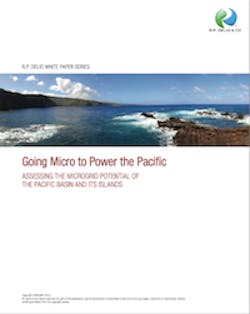The switch over to distributed and renewable energy systems is about more than just cutting loose from fossil fuels and embracing new energy sources. The clean energy change-over is demanding new models for electricity generation, and inverting relationships between producers, consumers and infrastructure operators. The monolithic command-and-control grid of the last century is being challenged by the small-scale, community-centric integration of electricity supply, delivery and management services.
Its herald is the microgrid: combining generation, distribution, consumption and storage at a local scale, under the aegis of advanced monitoring, control and automation systems. Island microgrids are placing self-generated electricity into the hands of local communities – and reworking traditional energy infrastructure from the bottom up.
And if Island microgrids are the enabling technology for opening up existing grid infrastructure – bringing new models for distributed energy deployment – then islands are their natural test-beds. With relatively small loads, isolated topologies and ample access to diverse renewable resources, island grids serve as logical starting points for reality-proofing the emerging microgrid technologies.
